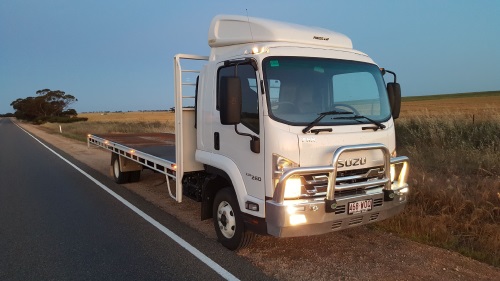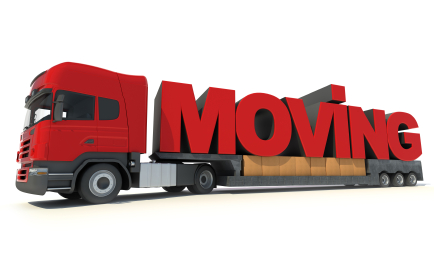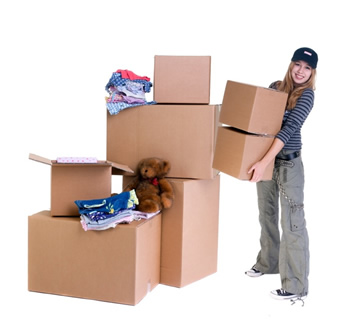Moving Tips
Here are some packing tips that you may not have thought of before. We hope it helps!
* Gather packing supplies before you start. There’s nothing more frustrating, then having to stop half-way through a packing session in order to get more supplies.
* Packed boxes should weigh less than 25 kilograms or you will struggle to move them around.
* Pack heavier items on the bottom.
* Stuff socks, scarves, pillow cases and other small fabric items in holes and crevices in boxes – just make sure you keep pairs of socks together!
* Make sure all boxes can close properly and be sealed so the tops are flat. If you over-pack a box, you risk damage to the contents.
* Pack small items in small boxes and place them into a large box. Label all boxes, large or small.
* Small, loose items should be boxed or bagged and sealed securely before placing into a larger box.
* If moving liquids, either transfer them into a sealable container or make sure the lid is secured by taping it down, then put it into a waterproof bag, seal the bag then place it upright into a box. Clearly mark the box with arrows and “This End Up”. Also, check which items should not be packed – items that your mover will not move.
* Keep an inventory list of each box and its contents.
* Keep clothing in dresser drawers.
* Keep important records with you. Do not move them with the rest of your household goods.
* Tape down anything that moves (except for the cat)!
* Fill free spots with lighter linens. This can be done with your washer and dryer, and the vegetable crisper in the refrigerator.
* As much as possible, keep items in their proper places. For example, when packing the silverware/flatware, keep it in its’ tray then tape bubble wrap around it to secure the contents. This is easier than sorting out all those pieces after your move.
* Tape screws, bolts and other loose items to underside of furniture. Make sure you bag them first.
* Keep tools you’ll need to reassemble furniture in a separate box that is clearly marked. Keep an all-purpose screwdriver in the glove compartment of our car for just such purposes. There’s nothing worse than arriving at your new home late at night, wanting to put the bed together and not knowing where the screwdriver is.
* Do not use standard garbage bags! They rip and tear too easily. If you’re going to pack linens and clothing in garbage bags, purchase the thicker, heavy ones to ensure they don’t burst during the move. Or double up. We prefer you not using garbage bags, so do so minimally. The great thing about garbage bags full of clothing is that they can be squished into nooks and holes that exist on the truck, thereby protecting furniture and using less space. Just limit how many you use.
* Keep items from the same room together as much as possible. This will make it easier to sort the contents after you move.
* Get everyone involved by making a task list, then dividing out the jobs that each person can do. Organizing your household will not only save you time and energy, but will make your whole family feel like part of this adventure.
* Get started now! It’s never too late
Who can’t use some moving tips when they’re packing up their whole life for a new home? If you’re among thousands of people who have picked up and moved their family to a new home or a new community, you have fresh memories of some of the ups and downs or thrills or frustrations of moving.
Drawing from personal experience, I know there are lots of ways to help make your household move easier and more smooth. Read here for help to get your life, and your possessions, organized for a peaceful and exciting move.
Make a list.
Write everything down! You’ll thank yourself later. Before you pack even one box, create a simple record keeping system. Create a computer-printed list of numbers with a space to write the contents. Or have a spiral-bound notebook for the job. You’ll place a number on EVERY box you pack and list the contents on your list. Don’t put the list down unless it’s in a place you’ll call Packing Central. This is where you’ll find your labels, marking pens, box tape, and other supplies. When describing the box contents, be specific — “A-D files” is better than “files”, and “Tulip dishes” rather than “misc. kitchen”.
Have plenty of supplies.
Don’t make me say this twice– you’ll need LOTS of boxes–probably more boxes than you think, and having enough boxes will make your life easier! Have about 10 boxes set aside to use for last minute items on moving day, such as bedding, clothing, and cleaning supplies. You’ll need strong plastic packing tape to close up the boxes securely. Use unprinted newsprint (newspaper can stain your items) or packing paper or bubble wrap to wrap and cushion household good. Again, you’ll need lots more supplies than you think, so get extra so the packing can go smoothly.
Utilize PortaRobe boxes.
These tall boxes are perfect for bulky, lightweight items such as comforters, pillows, and blankets, as well as clothes that need to remain hanging. Then measure the clothes in your closets (including coat closets) to see how many wardrobe boxes you’ll need. You can also use them for closet storage boxes, shoe boxes, and other bulky items such as fabric bolts, large baskets, or gift wrap tubes.
Don’t make the boxes too heavy to lift. Someone once put a bowling ball in a wardrobe box! When the box was lifted off the truck the bottom gave way, sending the bowling ball on a wild ride down the ramp, across the street to the gutter, then down a hill where it finally came to rest in a roadside ditch. (Is that a strike or a spare?). Get things organized as early as possible. A few days before your move, fill some sturdy handled shopping bags with bulky closet items such as shoes, sweaters, belts, and jeans. On moving day, fill the bottom of the wardrobe boxes with some of the shopping bags, then add your hanging clothing. Pack hanging items tightly so things won’t move around and fall off of hangers. Finally, cover the shoulders of your clothes (a dry cleaning bag works well), then add a few purses or sweaters on top. You’ll have fewer boxes, and closet items remain together. Also, the shopping bags will make it easier to retrieve your belongings from the bottoms of a tall wardrobe box.
Color coordinate.
Designate a color for each room in the new home, such as yellow for kitchen, orange for dining room, etc. Apply colored stickers on the box near the box number. In your new home. Put a matching sticker on the door to each room. The movers will then know where to put everything when they arrive at the destination. It’s also helpful to post a big sign on the wall in the room where you want boxes stacked, (“Boxes here please”) to keep them out of furniture and traffic areas.
Keep things together.
Keep bookends with books, light bulbs with lamps, and extension cords with appliances. Small, loose parts can be attached to the item they belong to with tape or placed in small envelopes — to keep picture hooks with pictures, shelf brackets with a bookcase, a special wrench and bolts with the wall unit. Keep larger corresponding items (such as a cable TV cord) in resealable bags, and tape these to the underside or back of the item. As a backup, have a “Parts Box” open on the kitchen counter and fill it with cables, cords, parts, pieces, brackets, or nails that are removed from any items of furniture. Keep this box with you, or mark it well with a rainbow of colored stickers so it can be easily located on move-in day.
Pack ahead.
Anything you can pack ahead will save you time on moving day. If it’s summer, get your winter clothes out of the way. You don’t really need 5 radios or TV’s around your house for the last few days there. Box up your shampoo and extra toothpaste and live out of a travel cosmetic case for the last week or two. Pare down cooking utensils and food supplies to bare essentials. Wastebaskets can also be packed (put things in them!) while you switch to using plastic grocery bags (hang them on a cabinet door or door handle to collect trash.)
Consolidate cleaning supplies.
If you must clean your old place after moving out, put together a kit of basic cleaning supplies and rags. Clean anything possible ahead of time (the inside of kitchen cupboards, the oven, windows, etc.), and if possible, vacuum each room as movers empty it.
Use your luggage.
Fill luggage and duffle bags with clothing, sheets, towels, and paper goods. Even for local moves you’ll be able to quickly spot your navy suitcase holding your favorite sweaters, whereas “Box #189” might remain elusive for days.
Safeguard valued items.
It’s a good idea to keep valuable possessions, such as silverware, collections, or antiques, with you. This is just for peace of mind
Keep important papers with you.
Your list of “important” papers might include: birth certificates, school records, mover estimates, new job contacts, utility company numbers, recent bank records, current bills, phone lists, closing papers, realtor info, maps, and more. Don’t leave these with the mover. Keep them with you as chances are that one important document you will need is “buried” at the front of the truck.
Personal boxes.
Use clearly labelled boxes, one for each person. Let each family member fill theirs with items they’ll want ‘right away’ in the new home — a set of sheets, a towel, a couple of extension cords, a phone, nightlights, address book, pens and paper, keys, kleenex, and travel cosmetic case, and so on.
Moving may not be the most fun you’ve ever had, but planning ahead will go a long way toward making the process bearable.



